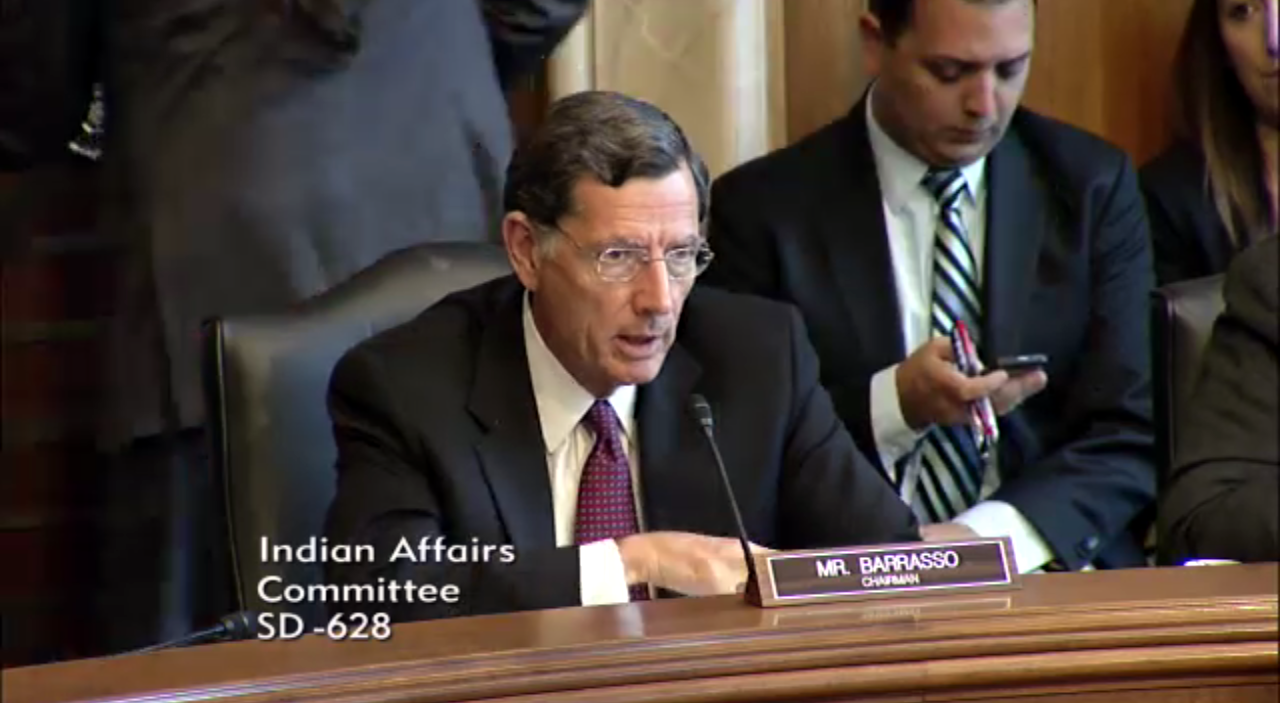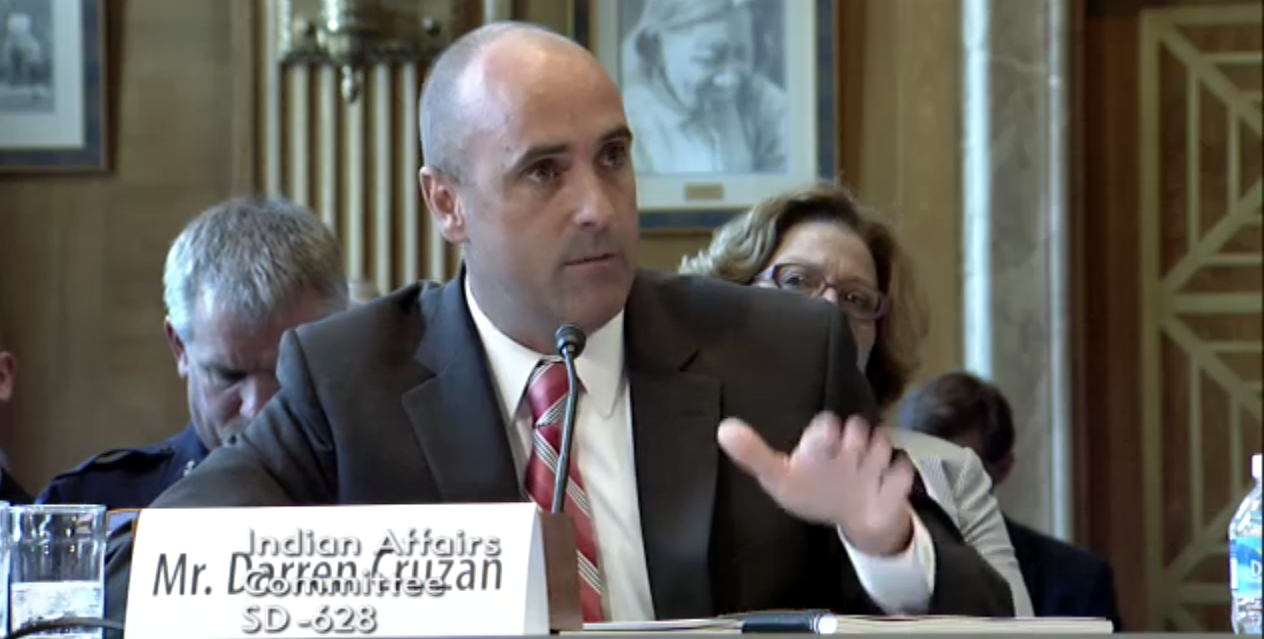July 16, 2015 | by Sarah Taranto, 2015 Summer Intern
American Indian and Alaska Native women face epidemic levels of violence in Indian country and Alaska Native villages. This crisis affects not only Native women, but also has profound effects on their children and families. This is particularly so for Native children. Exposure to violence in their homes places Native children at greater risk for substance abuse, school failure, and involvement in the juvenile and criminal justice systems.
On July 15, 2015, the Senate Committee on Indian Affairs heard testimony from the U.S. Department of Justice, the Bureau of Indian Affairs, the University of Nevada, and the Boys and Girls Club of America during an oversight hearing, titled “Juvenile Justice in Indian Country: Challenges and Promising Strategies.” The aim of the hearing was to discuss specific challenges faced by tribal, state, and federal governments, other organizations dealing with the incarceration of Native youth, and Native youth themselves. Witnesses were asked to comment on the challenges and strategies faced by the agencies they represent, as well as any specific recommendations for the Committee.
In 2010, Congress passed the Tribal Law and Order Act, which established the Indian Law and Order Commission. According to Committee Chairman Senator John Barrasso (R-WY), the Commission’s final report found that “Native American youth are overrepresented in federal and state juvenile justice systems, and receive harsher sentences than other juveniles.” This finding was corroborated by the Attorney General’s Advisory Committee on American Indian and Alaska Native Children Exposed to Violence Taskforce, which questioned in its reportthe “effectiveness of the juvenile justice systems in which these children may be involved.” Both reports found that Native youths in the juvenile justice system were not receiving the services needed to rehabilitate them, nor the support needed to prevent recidivism. Noting the lack of Congressional attention to Native youth in the justice system, Senator Barrasso added that the Committee is looking for alternative ways to keep Native youth out of the juvenile justice system.
In his testimony, the Honorable Robert Listenbee, Administrator-Office of Juvenile Justice and Delinquency Prevention, U.S. Department of Justice, stated that Native youth face “dangerously high levels of violence and the ensuing trauma.” According to one report Listenbee cited, violence (including violence, assault, homicide, and suicide) accounts for 75 percent of deaths among Native youth aged 12-20. Furthermore, Native youth are two and a half times more likely to experience violence related trauma than non-Native youth. The Attorney General’s National Task Force on Children Exposed to Violence found that children exposed to trauma through violence are “at greater risk for substance abuse, school failure and involvement in the juvenile and criminal justice systems. Of tribal children who enter the juvenile justice system, the prevalence of trauma symptoms due to violence exposure is estimated at 73 to 95 percent.”
 Darren Cruzan, Deputy Director-Office of Justice Services, Bureau of Indian Affairs (BIA), reported that the U.S. Department of Justice’s Defending Childhood Initiative found that children exposed to high levels of violence can be at significantly higher risk of aggressive behavior, school failure, and alcohol and drug abuse. The BIA recognized that the “conventional juvenile justice approach of simply incarcerating juveniles is not effective and may, in fact, increase delinquency rates.”The BIA has taken the stance that incarceration does more harm than good, and is shifting towards adopting alternatives to the incarceration of at risk Native youth. Mr. Cruzan stated that for many years, tribal governments have been telling the BIA that the incarceration of Native youths is not working to prevent delinquency. The federal government is now working to develop local solutions that involve tribes.
Darren Cruzan, Deputy Director-Office of Justice Services, Bureau of Indian Affairs (BIA), reported that the U.S. Department of Justice’s Defending Childhood Initiative found that children exposed to high levels of violence can be at significantly higher risk of aggressive behavior, school failure, and alcohol and drug abuse. The BIA recognized that the “conventional juvenile justice approach of simply incarcerating juveniles is not effective and may, in fact, increase delinquency rates.”The BIA has taken the stance that incarceration does more harm than good, and is shifting towards adopting alternatives to the incarceration of at risk Native youth. Mr. Cruzan stated that for many years, tribal governments have been telling the BIA that the incarceration of Native youths is not working to prevent delinquency. The federal government is now working to develop local solutions that involve tribes.
Addie C. Rolnick, Associate Professor-William S. Boyd School of Law, University of Nevada, re-emphasized that incarceration should not be used as a rehabilitation tool for delinquency caused by trauma. She stressed the need for alternatives to the incarceration of Native youth who have experienced trauma, preferably community-led initiatives. Her recommendations to the Committee were to remove Native children from state and federal authority and to place them under tribal authority, to increase accountability of state and federal juvenile justice systems towards tribal communities and Native youth, and to provide sustainable funding to tribes for the implementation of alternative programs. Ms. Rolnick recognized the need for funding and agency level and congressional policy that supports tribes in their efforts to implement alternative programs to incarceration.
The availability of resources is just one cha llenge facing juvenile justice. In his testimony, the Honorable Robert Listenbee stated that the “Office of Justices Program appropriation for dedicated Tribal Justice Assistance dropped from $75 million in FY 2010 to $35 million in FY 2015 and the funding for tribal juvenile justice declined from $25 million in FY 2010 to $5 million in FY 2015.” He highlighted the critical need for resources to support behavioral, health, and substance abuse services, as well as other types of preventative services.
llenge facing juvenile justice. In his testimony, the Honorable Robert Listenbee stated that the “Office of Justices Program appropriation for dedicated Tribal Justice Assistance dropped from $75 million in FY 2010 to $35 million in FY 2015 and the funding for tribal juvenile justice declined from $25 million in FY 2010 to $5 million in FY 2015.” He highlighted the critical need for resources to support behavioral, health, and substance abuse services, as well as other types of preventative services.
Underlining the need for mentor programs in Native communities, Carla Knapp, National Director of Native Services, Boys & Girls Clubs of America, highlighted that there have been positive results in communities with Boys & Girls Clubs of America programs.
In her testimony Ms. Knapp stated that studies have shown the cost of incarceration of Native youth to be extremely high in comparison to the cost of implementing programs, like the Boys & Girls Clubs of America, which could result in keeping delinquent youths out of trouble.
Senator Lisa Murkowski (R-AK) and Vice Chairman Senator Jon Tester (D-MT) both acknowledged the need for sustainable and predictable funding for preventative programs. Senator Tester stated that he is “Dismayed at the staggering statistics that describe the state of affairs for Native youth that are involved in the criminal justice system in this country,” and he is encouraged that the BIA and DOJ has begun to shift their focus from incarceration to prevention.
